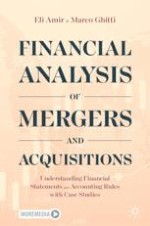2020 | OriginalPaper | Buchkapitel
4. Spin-Offs and Equity Carve-Outs
verfasst von : Eli Amir, Marco Ghitti
Erschienen in: Financial Analysis of Mergers and Acquisitions
Aktivieren Sie unsere intelligente Suche, um passende Fachinhalte oder Patente zu finden.
Wählen Sie Textabschnitte aus um mit Künstlicher Intelligenz passenden Patente zu finden. powered by
Markieren Sie Textabschnitte, um KI-gestützt weitere passende Inhalte zu finden. powered by
